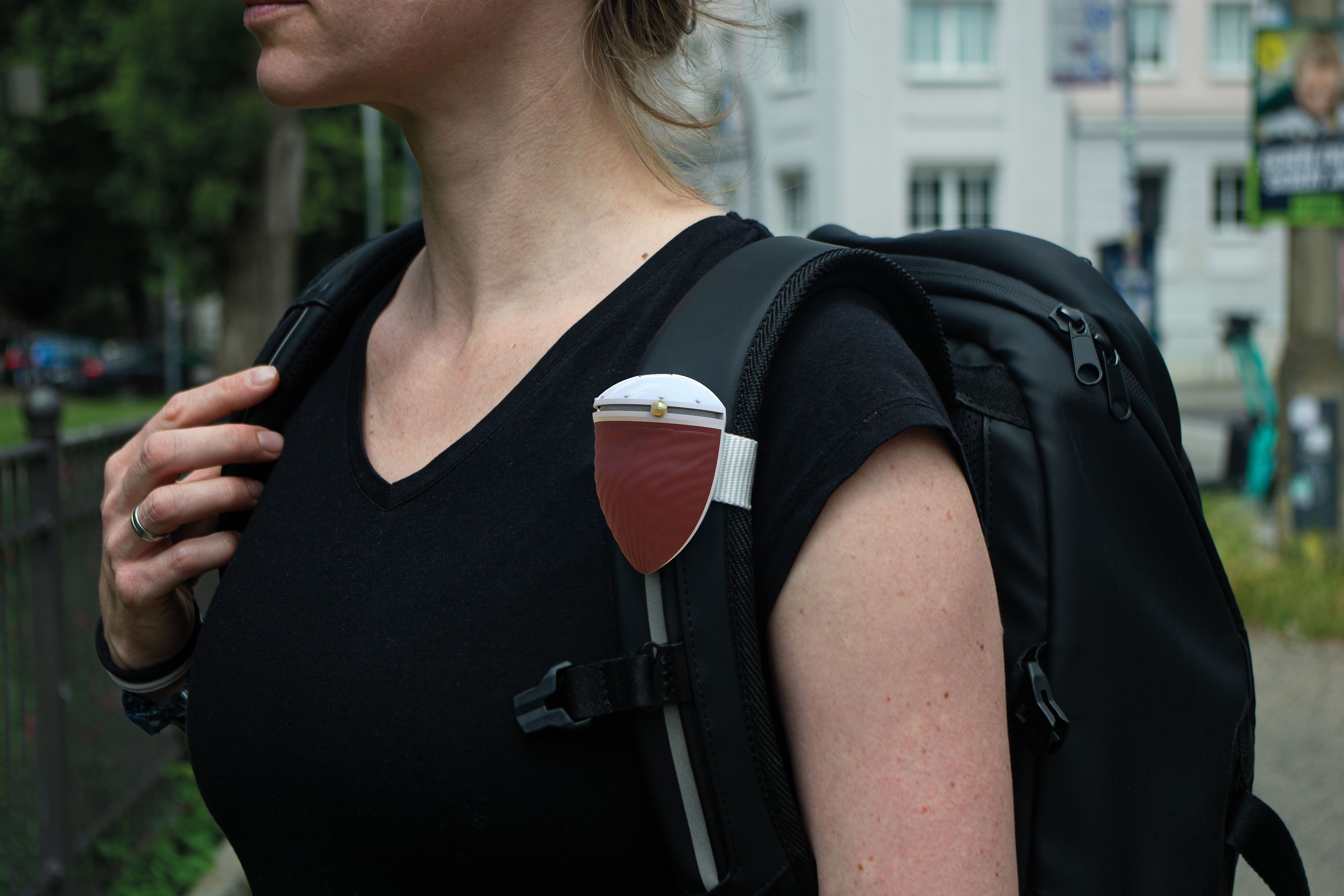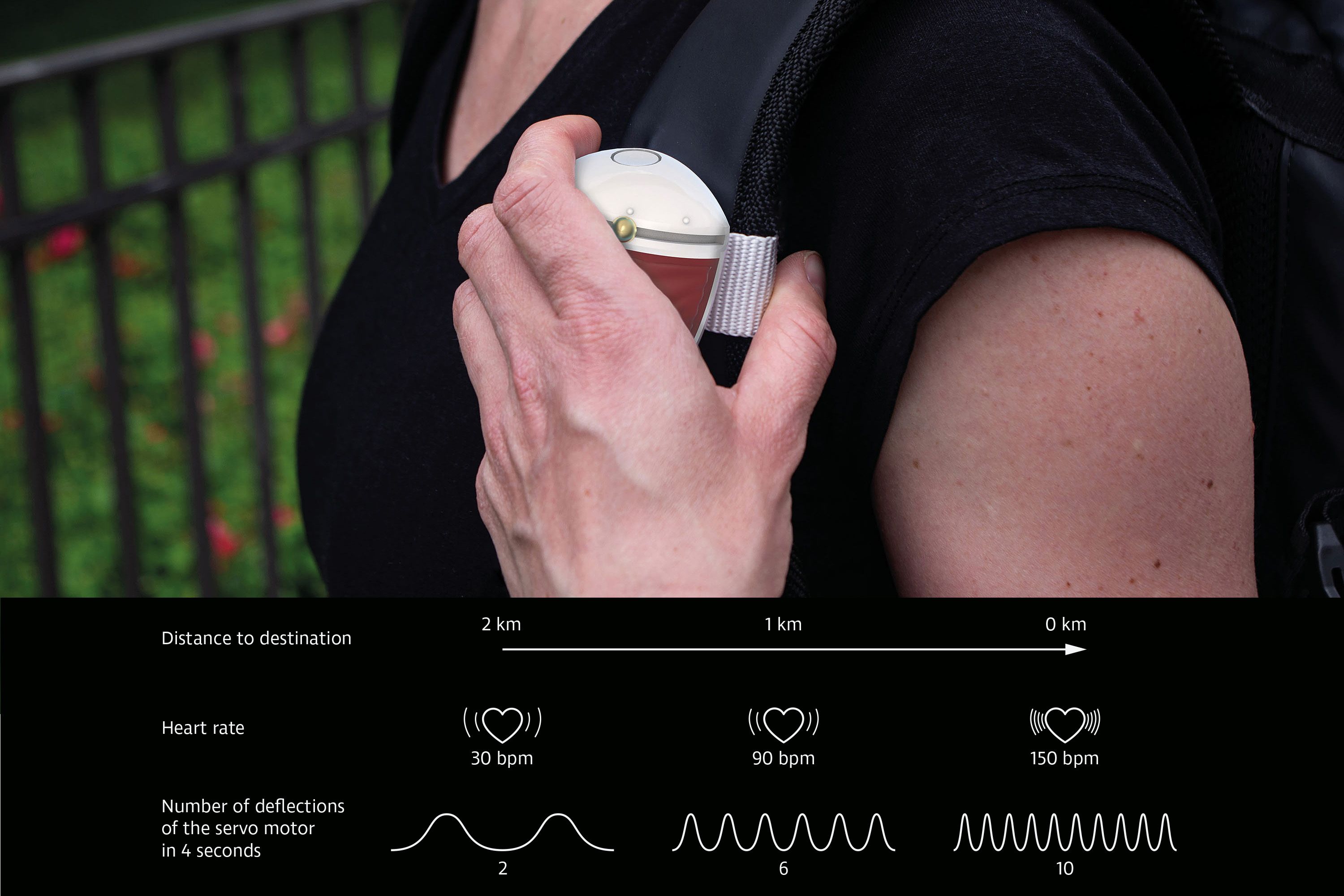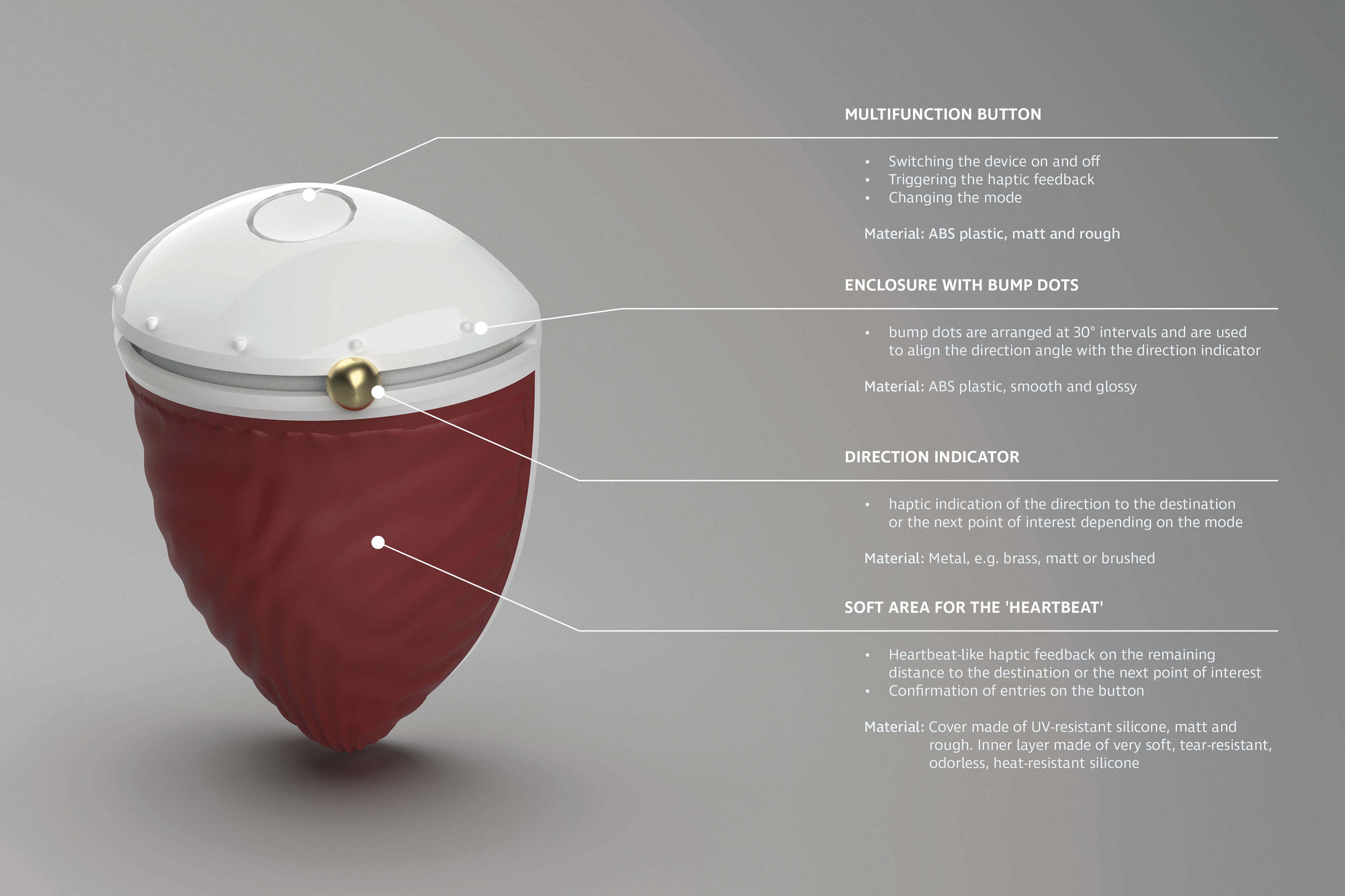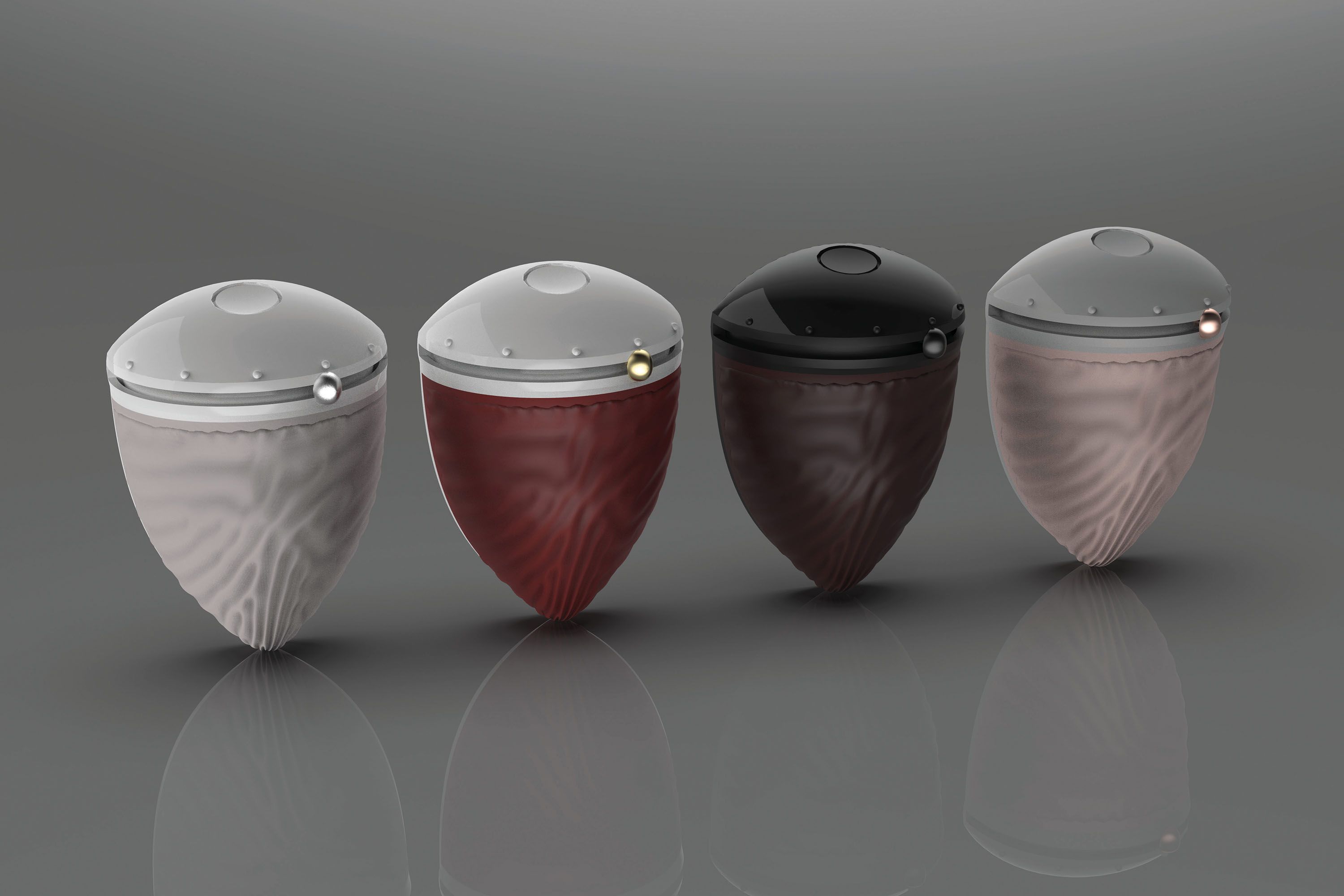
Designers
Sandra Vollmer
Year
2025
Category
New Talent
Country
Germany
School
Magdeburg-Stendal University of Applied Sciences
Teacher
Steffi Hußlein, Henrik Rieß, Sandra Maria Geschke

Three questions to the project team
What was the particular challenge of the project from a UX point of view?
The project focused on enhancing the tourist experience and fostering resonant moments, crucial to the transformative nature of travel, like building intercultural understanding. The key challenge was to create a design that provides orientation while preserving the experience of being guided by one's own curiosity and surprise. The UX design aimed to let users discover points of interest as independently as possible, fostering pride and achievement, while ensuring the haptic feedback didn’t interrupt potential moments of resonance. Additionally, the design’s tactile qualities were carefully crafted to create a resonance-sensitive basic mood, subtly enriching the experience and increasing the probability of experiencing resonance.
What was your personal highlight in the development process? Was there an aha!-moment, was there a low point?
My personal highlight was creating and user testing the haptic prototypes with various feedback options. Although the sample size was small, it was fascinating to see how differently participants evaluated the tactile and haptic impressions and the emotional impact they had. During the testing, participants were also presented with various refined concepts for the orientation aid. To be honest, I had a preference for one specific concept, but it didn’t prevail in the testing. I’d consider that a minor low point for me. However, I quickly moved past it and thoroughly enjoyed incorporating the testing results into the final design.
Where do you see yourself and the project in the next five years?
If the project generates positive resonance and interest among the target audience, I could envision bringing it to life and further developing it. This would require additional steps, such as creating a functional design prototype as well as designing and developing the accompanying mobile app to complete the overall concept. With this, the orientation aid could be tested with a larger group of participants in a realistic application scenario, possibly through an A/B test against an established navigation app like Google Maps. Participants could share feedback on resonance-enhancing or resonance-diminishing experiences through qualitative surveys. Insights from these tests would guide further improvements to refine the orientation aid.


